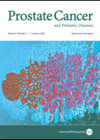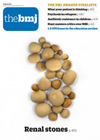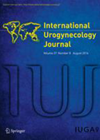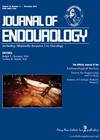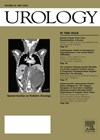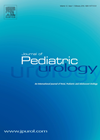
Journal Reviews
Results from the REDUCE study
Subjects in this paper were part of the Reduction by Dutasteride of PCa Events (REDUCE) study, a clinical trial enrolling men who had undergone a single negative prostate biopsy within six months of enrollment and subjecting them to a repeat...
Renal stones: an American perspective
This study is from Dallas, USA and appears on the front cover of the BMJ. About 1 in 11 people will have a kidney stone at some point in their lifetime. There is a linear increase in stone prevalence in...
Sepsis and antibiotics: the debate goes on
Sepsis statistics are staggering around the world. The UK Sepsis Trust estimates that there are around 150,000 cases of sepsis in the UK every year and it kills 44,000 patients per year. There are many different definitions and criteria; in...
Tolerability and persistence in women prescribed mirabegron
Mirabegron is a beta-3 agonist used in the treatment of overactive bladder (OAB). Trials have shown reduced side-effects but equal efficacy when compared to anticholinergics. The authors wished to examine patients’ persistence with treatment, in a non-trial setting, over a...
How effective are intravesical therapies for bladder pain syndrome?
The objective of this study was to review the clinical efficacy of currently available products for the intravesical treatment of bladder pain syndrome (BPS) / interstitial cystitis (IC) and to assess their pharmaco-economic impact. Nineteen articles were reviewed, including five...
Do complementary therapies work in painful bladder syndrome?
The aim of this systematic review was to evaluate the effectiveness of complementary therapies in the treatment of bladder pain syndrome. An electronic search identified 1454 articles; however, after review by two independent reviewers, this was reduced to 11 articles...
Surgical management of urethral diverticula in women
This systematic review aimed to evaluate different surgical techniques and their outcomes used for treating women with urethral diverticulae. One hundred and eight studies were identified; some of these however were single case reports (37%). As one would expect the...
Cord compression in cancer
This article will be of great interest to uro-oncologists. Vertebral metastasis occurs in 3-5% of all cancers (most commonly in prostate, breast and lung cancer). It can cause pain, vertebral collapse and cord compression. Data from the National Institute for...
Do stones still kill?
This paper is a retrospective analysis of deaths ascribed to stone disease in England and Wales over a 15-year period. The data was obtained from the Office of National Statistics, based on mortality derived from death certificates. One thousand, nine...
Worldwide flexible ureteroscopy practice uncovered
While guidelines recommend flexible ureteroscopy (fURS) for treating renal stones <1.5cm, considerable differences exist among urologists in the technique, use, and indications of fURS. In 2014, the Endourology Society set out to explore the differences in the fURS technique and...
MSKCC prostate cancer screening guidelines – is it the way forward?
The Memorial Sloan Kettering Cancer Center (MSKCC) developed prostate cancer screening recommendations first in 2011 as a response to three limitations of previous screening guidelines: insufficient evidence base, failure to link screening with treatment, and lack of risk stratification. To...
Do adult men with untreated ventral penile curvature have adverse outcomes?
The history of ventral penile curvature if untreated in childhood is not known. The authors tried to assess this by performing an online survey of adults who had untreated ventral penile curvature using a Facebook advertised survey. Their outcome measures...

